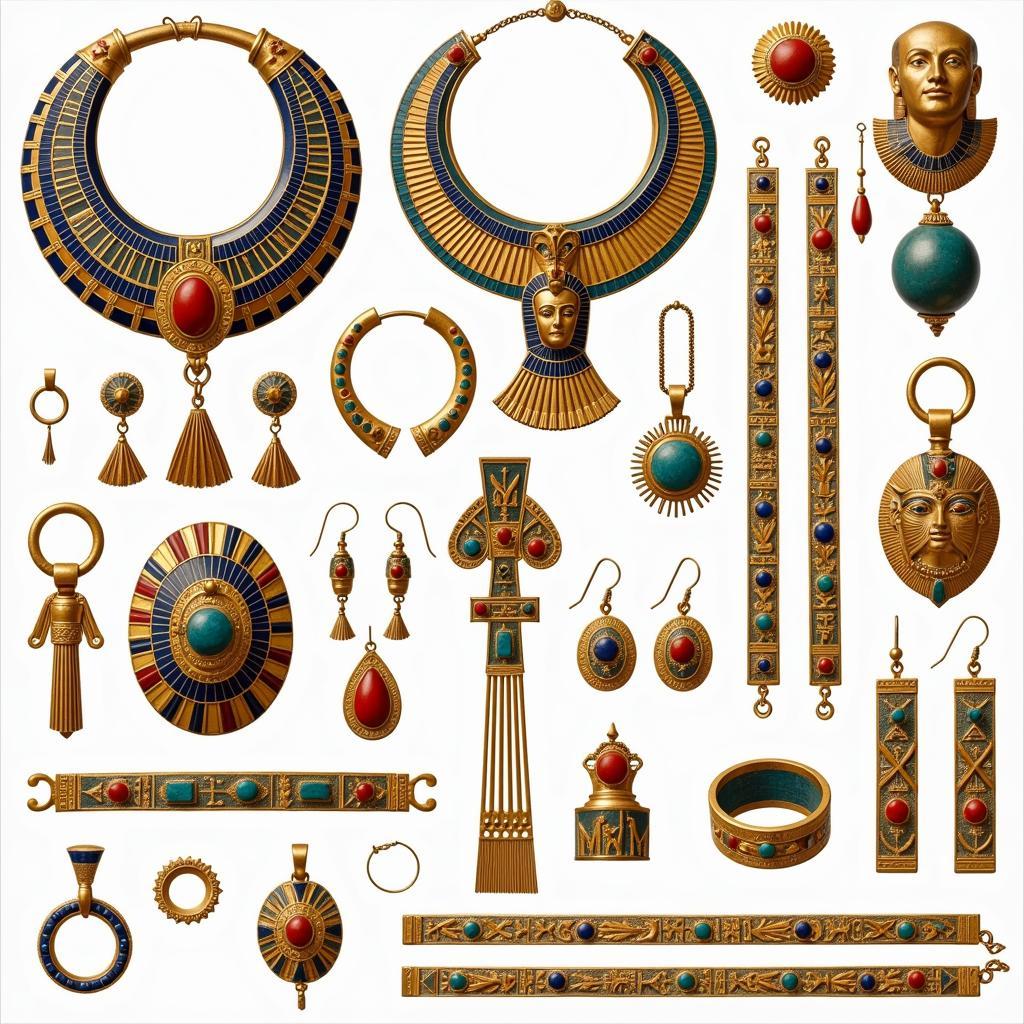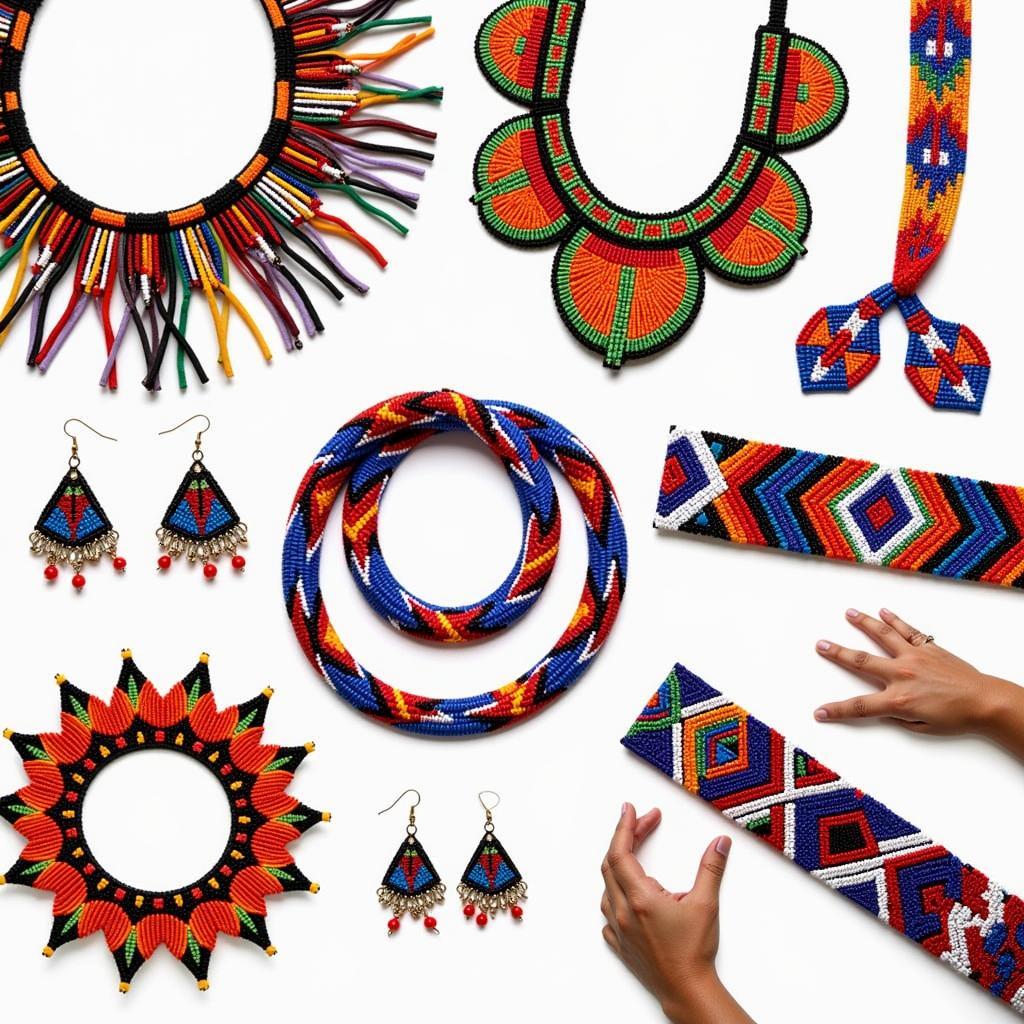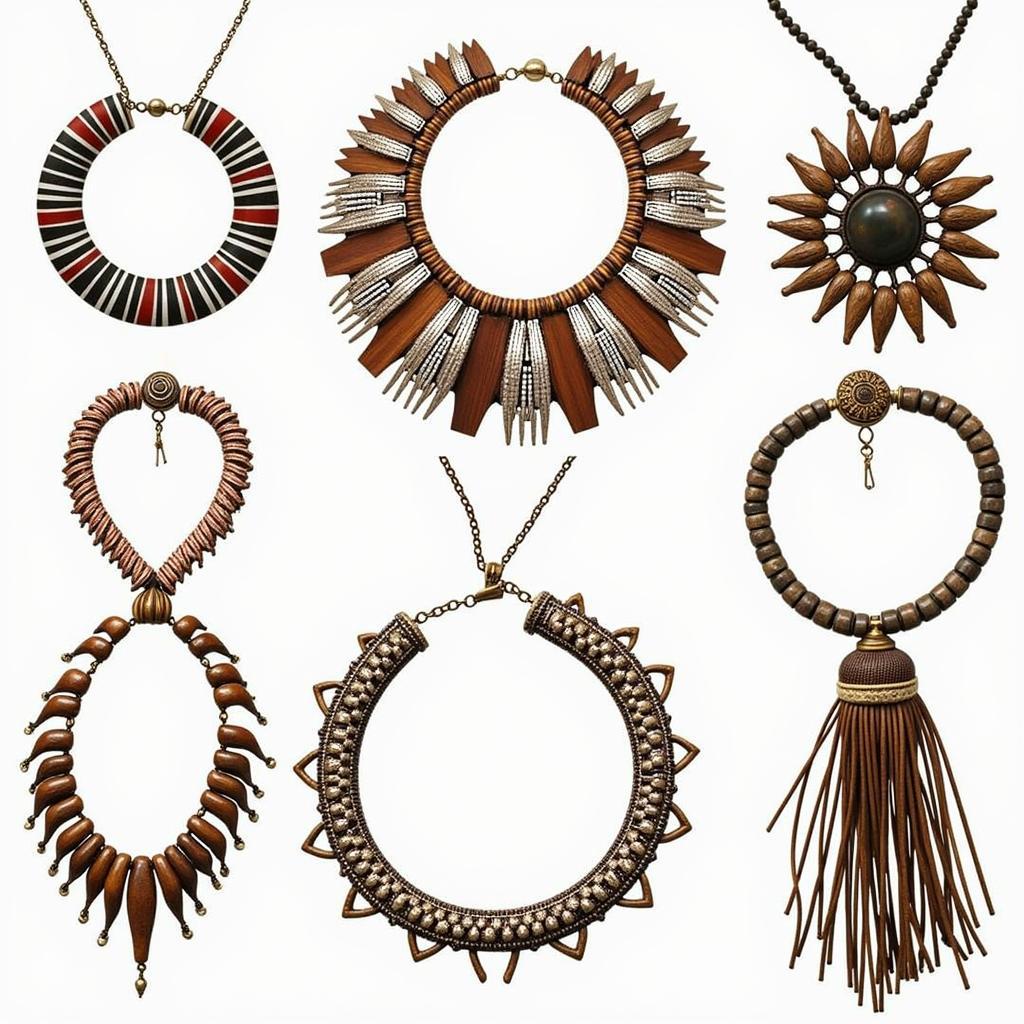Exploring the Rich Heritage of African Jewelry
African jewelry is more than just adornment; it’s a powerful expression of culture, status, and spirituality. From the intricate beadwork of the Maasai to the elaborate gold jewelry of the Ashanti, each piece tells a story, connecting the wearer to their ancestors and their land. This exploration delves into the diverse world of African jewelry, examining its history, materials, symbolism, and significance in contemporary society.
A Journey Through Time: The History of African Jewelry
For millennia, African artisans have crafted stunning jewelry using a wide array of materials, from locally sourced beads and shells to precious metals like gold and silver. Evidence of early jewelry making dates back to ancient Egypt, with its iconic use of gold, lapis lazuli, and carnelian. Across the continent, different regions developed their own unique styles and techniques, reflecting their environment, beliefs, and social structures. The use of recycled materials also plays a significant role, demonstrating a deep respect for resources and a commitment to sustainability.
The significance of African jewelry extends beyond its aesthetic appeal. It serves as a marker of identity, signifying social status, marital status, and even spiritual beliefs. Specific symbols and patterns often hold deep cultural meaning, passed down through generations. For example, the Adinkra symbols of the Akan people of Ghana represent proverbs and concepts, while the intricate beadwork of the Zulu people conveys messages of love, loss, and courage.
 Ancient Egyptian Jewelry: A Collection of Gold, Lapis Lazuli, and Carnelian Pieces
Ancient Egyptian Jewelry: A Collection of Gold, Lapis Lazuli, and Carnelian Pieces
Materials and Techniques: The Art of African Jewelry Making
From the deserts of North Africa to the lush rainforests of Central Africa, the continent’s diverse landscapes provide a rich source of materials for jewelry making. Traditional techniques are often passed down through families, preserving ancient skills and knowledge. The lost-wax casting method, used for centuries to create intricate metalwork, is a testament to the ingenuity of African artisans. Beadwork, another prominent form of African jewelry, utilizes a vast array of materials, from glass and clay to seeds and bone. The intricate patterns and vibrant colors of beaded jewelry reflect the creativity and artistic skill of the craftspeople.
What makes African jewelry unique is not only the materials and techniques but also the stories embedded within each piece. Often, the creation process involves rituals and ceremonies, imbuing the jewelry with spiritual significance. This connection to tradition and spirituality adds a layer of depth and meaning that sets African jewelry apart.
 Colorful Maasai Beadwork Jewelry: Necklaces, Bracelets, and Earrings
Colorful Maasai Beadwork Jewelry: Necklaces, Bracelets, and Earrings
African Jewelry in the Modern World: A Global Influence
Today, African jewelry continues to evolve, blending traditional techniques with contemporary designs. African designers are gaining international recognition, showcasing their unique creations on global platforms. The growing popularity of African jewelry reflects a renewed appreciation for handcrafted artistry and cultural heritage. From high-fashion runways to local markets, African jewelry has become a symbol of pride and identity, connecting people to the continent’s rich artistic legacy.
Furthermore, the ethical sourcing of materials and the support of local artisans are becoming increasingly important considerations for consumers. Choosing authentic African jewelry not only celebrates the continent’s artistic traditions but also contributes to sustainable economic development.
Conclusion: Embracing the Beauty and Significance of African Jewelry
African jewelry is a testament to the continent’s rich cultural heritage and artistic ingenuity. From ancient traditions to modern interpretations, each piece carries a story, connecting us to the people and the land that inspired its creation. By exploring the diverse world of African jewelry, we gain a deeper understanding of African culture and its enduring influence on global art and fashion. Embrace the beauty and significance of African jewelry, and wear it with pride.
 Contemporary African Jewelry Designs: A Fusion of Tradition and Modernity
Contemporary African Jewelry Designs: A Fusion of Tradition and Modernity
FAQ
-
What are some common materials used in African jewelry?
Common materials include gold, silver, beads, shells, bone, wood, and various stones. -
What is the significance of Adinkra symbols in African jewelry?
Adinkra symbols represent proverbs and concepts of the Akan people of Ghana. -
How can I tell if African jewelry is authentic?
Look for handcrafted details, unique designs, and inquire about the origin and materials used. -
What are some popular styles of African jewelry?
Popular styles include Tuareg silver jewelry, Maasai beaded jewelry, and Ashanti gold jewelry. -
Where can I buy authentic African jewelry?
You can purchase authentic African jewelry from reputable dealers, online marketplaces, and directly from artisans. -
How should I care for my African jewelry?
Care instructions vary depending on the materials. Consult the seller or a jeweler for specific advice. -
What is the significance of cowrie shells in African jewelry?
Cowrie shells are often associated with wealth, fertility, and good fortune.
Other Questions You Might Have
- What are the latest trends in African jewelry design?
- How can I incorporate African jewelry into my personal style?
- What are some ethical considerations when buying African jewelry?
You can find more articles about African art and culture on our website.
For further assistance, please contact us at Phone Number: +255768904061, Email: kaka.mag@gmail.com or visit our address: Mbarali DC Mawindi, Kangaga, Tanzania. We have a 24/7 customer service team.

